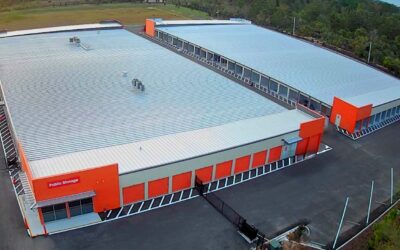These days, it feels like the self-storage supply in Denver, CO, is at least a mile high. And that could lead to a rocky future for self-storage operators and developers in the region.
Two recent reports shed light on just how much the self-storage presence has exploded in the Denver market.
A report from Marcus & Millichap indicates that among the top 50 U.S. metro areas, the self-storage inventory in the Denver market grew by the second highest level — 36.4 percent — from 2013 to 2018. Only one market, Raleigh, NC, had a higher rate of inventory growth.
Meanwhile, a report from Hendersonville, TN-based STR Inc., a data and analytics firm, shows the self-storage supply in the Denver area, as measured by net rentable square feet, is predicted to shoot up by 20.2 percent from February 2018 through January 2019. That would be the second highest growth rate among the top 50 metro areas, behind Raleigh. STR’s forecast for Denver encompasses 3.3 million net rentable square feet of self-storage that’s in the construction, expansion or final planning stage.
Proceeding with caution
“You really have to look at the local trade area for each facility to understand what the opportunity is,” said Anne Hawkins, executive vice president of STR. “I wouldn’t dismiss a market just because it has a lot of new supply coming in. I would dig into the submarkets.”
Indeed, Memphis, TN-based Jernigan Capital Inc., a self-storage investment REIT, put eight U.S. markets, including Denver, on its self-storage “danger list” in November 2017 — a list comprising markets with a high risk of long-term absorption troubles and “softened” rates. Yet Jernigan Capital continues to invest in “compelling” projects in submarkets within some of the eight “danger” zones. Jernigan Capital has made a few investments in Denver.
Too much storage
In light of that potential danger, Joan Lucas, a Denver self-storage broker affiliated with the Aurora, CO-based Self Storage Sales Network, is urging self-storage developers to think twice about building more facilities in the Denver market.
“Simply stated, the market cannot absorb one more project,” Lucas said. “I believe the Denver market is oversupplied, and it will take some time for the housing market to catch up with all of the self-storage development.”
In the Denver area, some new self-storage projects might not experience stabilized occupancy rates for four to five years, Lucas said. In a less-crowded market, stabilization would take two to three years, she said.
Rates turn downward
Denver already is witnessing downward pressure on rental rates. Some facilities in southeast Denver, for instance, have seen monthly rents on a 10×10 unit plummet from $150 to $75 because of the supply glut, Lucas said.
The Denver self-storage market is saturated enough that some developers are heeding Lucas’ advice and avoiding new projects.
Lucas said she recently was tapped to assess a 75,000-square-foot facility that was on the drawing board in southeast Denver. She discovered that within two miles of the site under consideration, about 300,000 square feet of self-storage either was just opening or was under construction. Given that information, the two developers who’d enlisted Lucas’ help decided against proceeding with the project.
Lucas said she thinks the current surplus is causing most of the big players in self-storage to be “really wary” of the Denver market. That hesitation is grounded in recent financial results. For instance, Glendale, CA-based REIT Public Storage, the country’s largest self-storage operator, noted in its financial report for 2017 that increased self-storage supply in Denver and several other markets had contributed to “softness” in same-store sales growth.
The wariness of operators like Public Storage about the Denver market “makes it bad for everyone, because the major institutions drive the cap rates and pricing,” Lucas said. “If they stop looking at Denver as a great place to park their money, we will all be hurt.”







